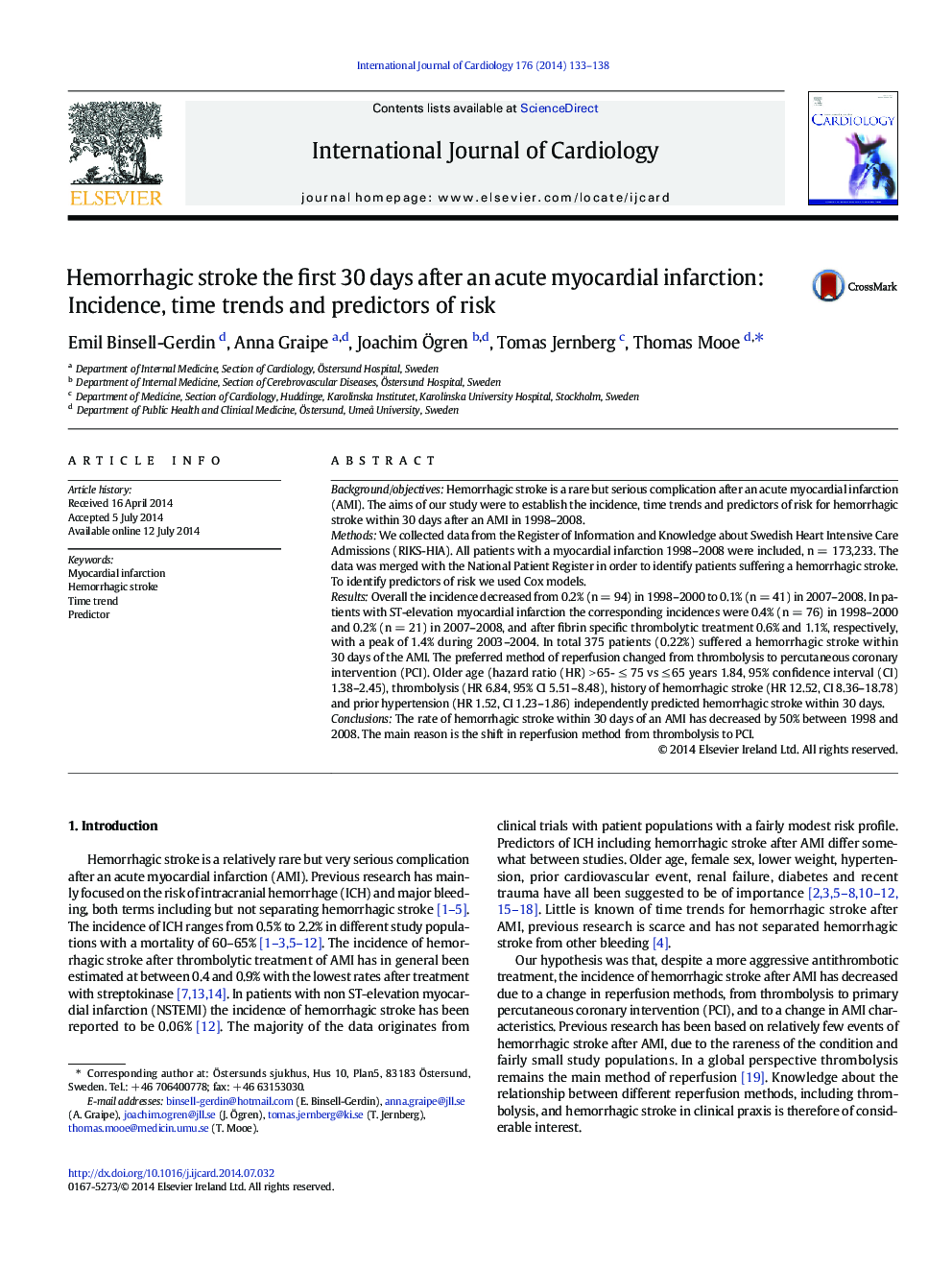| Article ID | Journal | Published Year | Pages | File Type |
|---|---|---|---|---|
| 5970661 | International Journal of Cardiology | 2014 | 6 Pages |
â¢The rate of hemorrhagic stroke within 30-days of an acute myocardial infarction has been reduced by 50% during the decade of 1998-2008â¢The decrease is likely caused by a shift in the method of reperfusion in STEMI, from thrombolysis to PCI, and by an increasing proportion of NSTEMIâ¢In clinical routine, the risk of hemorrhagic stroke associated with primary PCI is around 1/10th of that after thrombolysis, 0.1% vs 1.0%â¢The risk of hemorrhagic stroke after NSTEMI is stable around 0.1% despite a more aggressive antithrombotic treatment
Background/objectivesHemorrhagic stroke is a rare but serious complication after an acute myocardial infarction (AMI). The aims of our study were to establish the incidence, time trends and predictors of risk for hemorrhagic stroke within 30 days after an AMI in 1998-2008.MethodsWe collected data from the Register of Information and Knowledge about Swedish Heart Intensive Care Admissions (RIKS-HIA). All patients with a myocardial infarction 1998-2008 were included, n = 173,233. The data was merged with the National Patient Register in order to identify patients suffering a hemorrhagic stroke. To identify predictors of risk we used Cox models.ResultsOverall the incidence decreased from 0.2% (n = 94) in 1998-2000 to 0.1% (n = 41) in 2007-2008. In patients with ST-elevation myocardial infarction the corresponding incidences were 0.4% (n = 76) in 1998-2000 and 0.2% (n = 21) in 2007-2008, and after fibrin specific thrombolytic treatment 0.6% and 1.1%, respectively, with a peak of 1.4% during 2003-2004. In total 375 patients (0.22%) suffered a hemorrhagic stroke within 30 days of the AMI. The preferred method of reperfusion changed from thrombolysis to percutaneous coronary intervention (PCI). Older age (hazard ratio (HR) > 65- â¤Â 75 vs â¤Â 65 years 1.84, 95% confidence interval (CI) 1.38-2.45), thrombolysis (HR 6.84, 95% CI 5.51-8.48), history of hemorrhagic stroke (HR 12.52, CI 8.36-18.78) and prior hypertension (HR 1.52, CI 1.23-1.86) independently predicted hemorrhagic stroke within 30 days.ConclusionsThe rate of hemorrhagic stroke within 30 days of an AMI has decreased by 50% between 1998 and 2008. The main reason is the shift in reperfusion method from thrombolysis to PCI.
